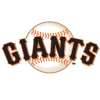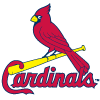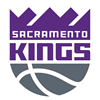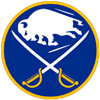YES! It's Opening Day. Almost every pitcher is on the watch list. It's difficult managing all the live baseball I want to see, but there is still work to be done. Many leagues have already completed their drafts. Others will be happening soon, but draft day is just the beginning of a fantasy season, and no place will likely offer more opportunities to profit than the bullpens.
Not that long ago, assessing a team's pitching staff heading into a season was challenging, but it was usually fairly consistent. Most teams would be fielding a rotation of five starting pitchers they hoped could pitch into the sixth or seventh inning, and a bullpen with somewhat defined roles. There would be a long man or two, in case the starter didn't get deep enough into the game, followed by set-up guys, charged with bridging the game to the closer. By now, most roles would be fairly well defined. Of course, there could still be changes as the season progressed, but there would probably be a Plan A in place. This year, perhaps more than ever, is different.
The bottom line: Better teams, with more quality pitching depth, barring injuries, are usually both more predictable and more productive with regard to providing useful fantasy statistics. Ideally, you could fill your staff with pitchers from better teams with the depth to maintain generally static roles for their bullpen arms. Unfortunately, those guys tend to be expensive on draft day, and almost never appear on
YES! It's Opening Day. Almost every pitcher is on the watch list. It's difficult managing all the live baseball I want to see, but there is still work to be done. Many leagues have already completed their drafts. Others will be happening soon, but draft day is just the beginning of a fantasy season, and no place will likely offer more opportunities to profit than the bullpens.
Not that long ago, assessing a team's pitching staff heading into a season was challenging, but it was usually fairly consistent. Most teams would be fielding a rotation of five starting pitchers they hoped could pitch into the sixth or seventh inning, and a bullpen with somewhat defined roles. There would be a long man or two, in case the starter didn't get deep enough into the game, followed by set-up guys, charged with bridging the game to the closer. By now, most roles would be fairly well defined. Of course, there could still be changes as the season progressed, but there would probably be a Plan A in place. This year, perhaps more than ever, is different.
The bottom line: Better teams, with more quality pitching depth, barring injuries, are usually both more predictable and more productive with regard to providing useful fantasy statistics. Ideally, you could fill your staff with pitchers from better teams with the depth to maintain generally static roles for their bullpen arms. Unfortunately, those guys tend to be expensive on draft day, and almost never appear on the waiver wire. Therefore, we need to look at some teams, in what seems like turmoil, to hopefully find some scrap heap value.
Let's review some bullpens with potential question marks as we dive into the 2023 season:
 Mets – Let's start things off with perhaps the biggest "crash" of the spring. Celebrating a win in the WBC, Edwin Diaz tore up his knee, requiring surgery and probably costing him all of 2023. I've been waiting to see what the Mets plan to do without their star closer. This isn't a case of "so and so can probably step up" and everything will be fine. Internal options like David Robertson and Adam Ottavino are adequate relief pitchers, but do you see either of them pitching the ninth inning of a World Series game? Brooks Raley is a left-handed option when healthy, but things again get blurry in that big game. This is not a team building for the future. Their two best pitchers, both genuine aces, are ages 38 and 40. That spells W-I-N N-O-W. I thought they might take a flyer on someone like Zack Britton or Ken Giles, or pull off a blockbuster deal to bring in a proven closer. Apparently, the former pair didn't impress in showcases, but I make it better than 50/50 a deal happens sooner rather than later. Until then, Robertson is the likely stopgap candidate, but I think a tandem committee of Ottavino and Raley sounds better.
Mets – Let's start things off with perhaps the biggest "crash" of the spring. Celebrating a win in the WBC, Edwin Diaz tore up his knee, requiring surgery and probably costing him all of 2023. I've been waiting to see what the Mets plan to do without their star closer. This isn't a case of "so and so can probably step up" and everything will be fine. Internal options like David Robertson and Adam Ottavino are adequate relief pitchers, but do you see either of them pitching the ninth inning of a World Series game? Brooks Raley is a left-handed option when healthy, but things again get blurry in that big game. This is not a team building for the future. Their two best pitchers, both genuine aces, are ages 38 and 40. That spells W-I-N N-O-W. I thought they might take a flyer on someone like Zack Britton or Ken Giles, or pull off a blockbuster deal to bring in a proven closer. Apparently, the former pair didn't impress in showcases, but I make it better than 50/50 a deal happens sooner rather than later. Until then, Robertson is the likely stopgap candidate, but I think a tandem committee of Ottavino and Raley sounds better.
 Marlins – No major injuries here. The Marlins simply don't have a true closer in house. They list several pitchers as possibilities to see save chances, but none of them are what you would consider top-shelf candidates. The most promising end-gamer is probably Dylan Floro, but he doesn't have classic closer stuff. A serious sleeper is newcomer Matt Barnes. He has a bigger arm, but he needs to prove he can finish games with only rare meltdowns. I like him, so maybe the change in scenery is what he needed. Another newcomer, lefty A.J. Puk, is another possibility, but I really think he fits better as a long reliever for key situations. Tanner Scott has some closing experience, but again, he is better-suited for a set-up role. I look for Floro to get the most chances early on. However, while Barnes offers no guarantee and he is 32-years-old, I feel like he makes this is a story with no clear ending. Stay tuned.
Marlins – No major injuries here. The Marlins simply don't have a true closer in house. They list several pitchers as possibilities to see save chances, but none of them are what you would consider top-shelf candidates. The most promising end-gamer is probably Dylan Floro, but he doesn't have classic closer stuff. A serious sleeper is newcomer Matt Barnes. He has a bigger arm, but he needs to prove he can finish games with only rare meltdowns. I like him, so maybe the change in scenery is what he needed. Another newcomer, lefty A.J. Puk, is another possibility, but I really think he fits better as a long reliever for key situations. Tanner Scott has some closing experience, but again, he is better-suited for a set-up role. I look for Floro to get the most chances early on. However, while Barnes offers no guarantee and he is 32-years-old, I feel like he makes this is a story with no clear ending. Stay tuned.
 Diamondbacks – This looks like a case of something old and something new. It is common for managers to prefer a pitcher with closing experience to handle the ninth inning, even when another option might appear to be a better choice. For a few seasons, Mark Melancon has been considered "washed up" but still ended up the favorite for save chances. But now, the veteran has a sore shoulder and will likely miss at least a couple months. So, who is the "new" closer? There are several options. Set-up man Joe Mantiply and newcomer Miguel Castro are candidates. Mantiply needs to stay in a set-up role, and while Castro has a big arm, the journeyman has been around MLB primarily because he can't throw strikes. Maybe Kevin Ginkel. His results have ranged from encouraging to disappointing, sometimes in back-to-back games, so he will need to build confidence to get back into the consideration set. I'm casting my vote, albeit with limited enthusiasm, for Scott McGough. He's no kid. He's been in pro ball since 2011, but he has just a handful of MLB innings. The difference now is he spent the past few seasons in Japan, where quite a few arms have gone to learn the art of pitching. I have liked what I've seen this spring. He will probably have to pitch his way out of the saves mix while perhaps sharing the duties with Ginkel, at least until Melancon returns. I'm not completely sold on McGough, so don't totally rule out Melancon eventually getting into the mix again, but he could become more entrenched if he avoids frequent and/or serious meltdowns.
Diamondbacks – This looks like a case of something old and something new. It is common for managers to prefer a pitcher with closing experience to handle the ninth inning, even when another option might appear to be a better choice. For a few seasons, Mark Melancon has been considered "washed up" but still ended up the favorite for save chances. But now, the veteran has a sore shoulder and will likely miss at least a couple months. So, who is the "new" closer? There are several options. Set-up man Joe Mantiply and newcomer Miguel Castro are candidates. Mantiply needs to stay in a set-up role, and while Castro has a big arm, the journeyman has been around MLB primarily because he can't throw strikes. Maybe Kevin Ginkel. His results have ranged from encouraging to disappointing, sometimes in back-to-back games, so he will need to build confidence to get back into the consideration set. I'm casting my vote, albeit with limited enthusiasm, for Scott McGough. He's no kid. He's been in pro ball since 2011, but he has just a handful of MLB innings. The difference now is he spent the past few seasons in Japan, where quite a few arms have gone to learn the art of pitching. I have liked what I've seen this spring. He will probably have to pitch his way out of the saves mix while perhaps sharing the duties with Ginkel, at least until Melancon returns. I'm not completely sold on McGough, so don't totally rule out Melancon eventually getting into the mix again, but he could become more entrenched if he avoids frequent and/or serious meltdowns.
 Phillies – The Phillies bullpen has been horrible the past few seasons. Wait. Let me rephrase that. The Phillies bullpen has been epically horrible. They have gone to great strides to improve the pen, and I definitely think they have made some progress, but questions remain regarding the ninth inning. The biggest recent addition – Craig Kimbrel – is penciled in as their new closer, but label me skeptical. He has 394 career saves, but his best days may be behind him. The consistent command just isn't there. Another newcomer, former part-time closer Gregory Soto and flamethrowing lefty holdover Jose Alvarado are both better-suited to more versatile set-up roles. And, as a result of the Kimbrel addition, the team will have them, plus Andrew Bellatti and the team's best relief pitcher (in my opinion), Seranthony Dominguez bridging to the ninth inning. Kimbrel, with his resume, will probably have a long leash, but I think I want Dominguez as a handcuff wherever possible.
Phillies – The Phillies bullpen has been horrible the past few seasons. Wait. Let me rephrase that. The Phillies bullpen has been epically horrible. They have gone to great strides to improve the pen, and I definitely think they have made some progress, but questions remain regarding the ninth inning. The biggest recent addition – Craig Kimbrel – is penciled in as their new closer, but label me skeptical. He has 394 career saves, but his best days may be behind him. The consistent command just isn't there. Another newcomer, former part-time closer Gregory Soto and flamethrowing lefty holdover Jose Alvarado are both better-suited to more versatile set-up roles. And, as a result of the Kimbrel addition, the team will have them, plus Andrew Bellatti and the team's best relief pitcher (in my opinion), Seranthony Dominguez bridging to the ninth inning. Kimbrel, with his resume, will probably have a long leash, but I think I want Dominguez as a handcuff wherever possible.
 Dodgers – Another "closer of the future" has spent a couple seasons trying to make the future now, and he may be about to make it happen. Brusdar Graterol has often shown what seems to be the raw skill set to be a major league closer, but he sometimes followed those glimpses with stretches of inefficiency. Maybe those rough stretches were influenced by health issues? But, the future is now, as his primary competition, Daniel Hudson, will open the season on the injured list. When healthy, Hudson makes an excellent insurance policy, and I think that's where the Dodgers would like to see him. There are several other candidates should the top two stumble. Two of the possibilities, Evan Phillips and southpaw Alex Vesia, are exceptional set-up men, so they can fill-in if needed. I think we can further narrow it down to Caleb Ferguson and Phil Bickford. Both are competent arms, giving the Dodgers a potentially potent pen if it all shakes out, and it could get even deeper if Blake Treinen and J.P. Feyereisen get past their shoulder injuries later this year.
Dodgers – Another "closer of the future" has spent a couple seasons trying to make the future now, and he may be about to make it happen. Brusdar Graterol has often shown what seems to be the raw skill set to be a major league closer, but he sometimes followed those glimpses with stretches of inefficiency. Maybe those rough stretches were influenced by health issues? But, the future is now, as his primary competition, Daniel Hudson, will open the season on the injured list. When healthy, Hudson makes an excellent insurance policy, and I think that's where the Dodgers would like to see him. There are several other candidates should the top two stumble. Two of the possibilities, Evan Phillips and southpaw Alex Vesia, are exceptional set-up men, so they can fill-in if needed. I think we can further narrow it down to Caleb Ferguson and Phil Bickford. Both are competent arms, giving the Dodgers a potentially potent pen if it all shakes out, and it could get even deeper if Blake Treinen and J.P. Feyereisen get past their shoulder injuries later this year.
 Angels – Certainly not in every case, but frequently, when teams refer to a "closer by committee" approach to the late innings, they are actually saying they want to keep their options open until they are confident their intended closer has established himself. I feel like the Angels are right there. When recent saves leader Raisel Iglesias moved on, a closer by committee was born. Capable set-up guys like Jimmy Herget, Ryan Tepera, Jose Quijada and even Matt Moore took turns closing while they sorted things out. That group will likely get the seventh and eighth innings while newcomer Carlos Estevez will often handle the ninth – at least until he "walks" away from it. Enter Ben Joyce. He's been sent down (to Double-A to avoid thin air), so I think people might forget about the reliever with the nastiest stuff in their pen. The assignment is quite probably temporary. He is a prototype closer, with a fastball that can sit 103 to 104 mph and has touched 105. He just needs to refine his command. I pursued Joyce in every draft possible, and I think it's only a matter of time before he emerges as their go-to guy to close games.
Angels – Certainly not in every case, but frequently, when teams refer to a "closer by committee" approach to the late innings, they are actually saying they want to keep their options open until they are confident their intended closer has established himself. I feel like the Angels are right there. When recent saves leader Raisel Iglesias moved on, a closer by committee was born. Capable set-up guys like Jimmy Herget, Ryan Tepera, Jose Quijada and even Matt Moore took turns closing while they sorted things out. That group will likely get the seventh and eighth innings while newcomer Carlos Estevez will often handle the ninth – at least until he "walks" away from it. Enter Ben Joyce. He's been sent down (to Double-A to avoid thin air), so I think people might forget about the reliever with the nastiest stuff in their pen. The assignment is quite probably temporary. He is a prototype closer, with a fastball that can sit 103 to 104 mph and has touched 105. He just needs to refine his command. I pursued Joyce in every draft possible, and I think it's only a matter of time before he emerges as their go-to guy to close games.
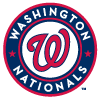 Nationals – Unlike most of the teams discussed here, the Nats actually have what appears to be a fairly set bullpen. However, they are a bit mismatched, and that has some role designations in a potential state of flux. Kyle Finnegan finished 2022 as the closer and is likely the favorite to pitch the ninth this season, at least early on, but others like Hunter Harvey, Sean Doolittle and my dark horse Carl Edwards have been mentioned as possible alternatives. This is not really surprising. There is also talk of Finnegan being used whenever needed. As the team tries to collect at least a handful of wins in 2023, Finnegan does a decent job considering his less than dominating stuff. He doesn't break radar guns, but he has pretty consistently been competent when finishing games, and that says a lot. I just really think Edwards could take control of the end game if all the pieces fall into place, freeing up Finnegan (and Harvey) to do what they are best suited for – bridging the gap with versatility, between the starter and closer. This would likely be a moot point if the Nationals actual closer, Tanner Rainey, was available, but he is out for all (or at least most) of the year recovering from August, 2022 Tommy John surgery.
Nationals – Unlike most of the teams discussed here, the Nats actually have what appears to be a fairly set bullpen. However, they are a bit mismatched, and that has some role designations in a potential state of flux. Kyle Finnegan finished 2022 as the closer and is likely the favorite to pitch the ninth this season, at least early on, but others like Hunter Harvey, Sean Doolittle and my dark horse Carl Edwards have been mentioned as possible alternatives. This is not really surprising. There is also talk of Finnegan being used whenever needed. As the team tries to collect at least a handful of wins in 2023, Finnegan does a decent job considering his less than dominating stuff. He doesn't break radar guns, but he has pretty consistently been competent when finishing games, and that says a lot. I just really think Edwards could take control of the end game if all the pieces fall into place, freeing up Finnegan (and Harvey) to do what they are best suited for – bridging the gap with versatility, between the starter and closer. This would likely be a moot point if the Nationals actual closer, Tanner Rainey, was available, but he is out for all (or at least most) of the year recovering from August, 2022 Tommy John surgery.
 White Sox – This is kind of a scary scenario. A couple months ago, Liam Hendriks was diagnosed with non-Hodgkin lymphoma. I'm no doctor, but I know enough to be sure that disease is no picnic. He is actually throwing and participating in preseason drills while undergoing treatment, but he will likely miss the first couple months of the season. I'll start by wishing Hendriks, a truly elite closer, all the best. As to who fills in for him, I expected it to be set-up man Kendall Graveman. He's better as a set-up guy, but appeared adequate to fill in as their closer. Then, the White Sox manager threw that plan in the fire and stated the team will head into the season with no set ninth-inning guy. The name being bandied about as another option is Reynaldo Lopez. He's a nice long reliever/swingman, but he has never struck me as a closer. There are other alternatives, too, like Aaron Bummer, Joe Kelly and eventually Garrett Crochet once he gets healthy, but I'm betting Graveman gets the lion's share until Hendriks returns.
White Sox – This is kind of a scary scenario. A couple months ago, Liam Hendriks was diagnosed with non-Hodgkin lymphoma. I'm no doctor, but I know enough to be sure that disease is no picnic. He is actually throwing and participating in preseason drills while undergoing treatment, but he will likely miss the first couple months of the season. I'll start by wishing Hendriks, a truly elite closer, all the best. As to who fills in for him, I expected it to be set-up man Kendall Graveman. He's better as a set-up guy, but appeared adequate to fill in as their closer. Then, the White Sox manager threw that plan in the fire and stated the team will head into the season with no set ninth-inning guy. The name being bandied about as another option is Reynaldo Lopez. He's a nice long reliever/swingman, but he has never struck me as a closer. There are other alternatives, too, like Aaron Bummer, Joe Kelly and eventually Garrett Crochet once he gets healthy, but I'm betting Graveman gets the lion's share until Hendriks returns.
These aren't all the questions by any means, but they are some situations to watch. We covered eight teams, and didn't get into several others like the Braves and Mariners where closer questions are likely to be short term, and I probably could have explored many more teams where there aren't even relatively legitimate closers, meaning a true committee approach. As always, we'll keep tabs on possible bullpen adjustments throughout the season in the Endgame Odyssey section of the Musings, but for now, it's Opening Day … Enjoy!












